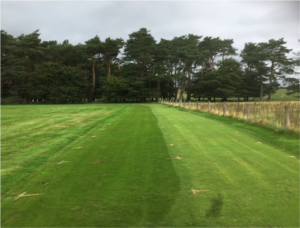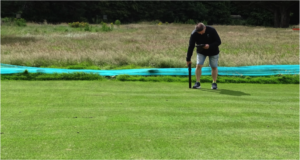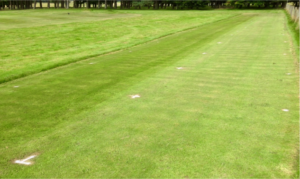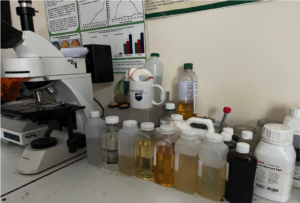They just keep your soil wet, don’t they?
Related Articles
Soil surfactants, wetting agents, penetrants and wetters. These are all different names for the same thing, or are they? And are they worth the cost and the bother of having to apply them? Dr John Dempsey gives his analysis.
Over the past number of years, I have carried out numerous studies in the areas of disease control and turfgrass growth. Now I want to share results from some studies involving the use of surfactants. I won’t be naming any products, but I will provide some interesting data.
These trials were carried out between May and September 2020 and 2021, based on Poa annua greens on a USGA sand rootzone. Randomised treatments, comprising surfactants and controls, were applied sequentially at 28-day intervals.
Assessments included:
• Volumetric water content
• Normalised difference vegetation index
• Turfgrass quality
• Wilt / drought stress.
A significant amount of data was gathered from these trials and today is just a snapshot of some of the more interesting results. The summer of 2020 here was exceptionally wet! So, no useful data regarding drought responses! However, assessments of plant health showed significantly better results in all surfactant treatments compared to controls. In a sentence, none of the treatments produced differences in drought responses, but all surfactants improved plant health and turfgrass quality over the four-month period compared to controls. Conditions during 2021 were better, during July, we experienced extremely hot and dry weather. All the surfactant treatments significantly reduced wilting compared to controls, and although some performed better than others, statistically they produced the same results.
Plant health assessments, in particular turf quality, again provided significant data, supporting the conclusions of the 2020 trial.
For me, there were a couple of standout results from these trials. Firstly, when the effects on moisture levels for both years were calculated there were no statistical differences between any of the surfactants. But it was how different surfactants caused the variations in soil moisture under different precipitation periods which was particularly interesting. We found some surfactants allowed for drier rootzones during periods of precipitation but maintained greater moisture during dry periods.
A second standout result was how surfactant treatments enhanced turfgrass quality, even during non-stressful environmental growth conditions! The influencing factors I would surmise would be better infiltration, reduced soil repellency and uniformity of water distribution. Also, there was greater retention or availability of nutrients following sequential surfactant treatment. So, there’s more to surfactants than just keeping your soil wet!
Dr John Dempsey PhD was course manager at Royal Curragh Golf Club, Ireland’s oldest golf club, from 1993 to 2019. He has a first class honours degree in turfgrass science from Myerscough College and a PhD in turfgrass pathology at the University of the West of England’s Centre for Research in Biosciences
A discussion about this article can be found here.





























